People who believe they have asymmetric upper eyelids frequently seek cosmetic upper eyelid surgery. Asymmetrical eyes can be caused by differences in bone structure, the amount of skin and fat over the eyes, the height of the eyelids, and the appearance of the eyelid crease. I’ll explain how I evaluate patients with asymmetric eyes in my practice.
Every day in my practice as an oculoplastic surgeon and eyelid surgery specialist, I perform all types of eyelid cosmetic and reconstructive surgeries, including revision surgery to correct cosmetic eyelid surgery procedures performed by other doctors. Every day, I also perform non-surgical eyelid procedures such as filler, Botox, PRP, laser, and radiofrequency treatments.

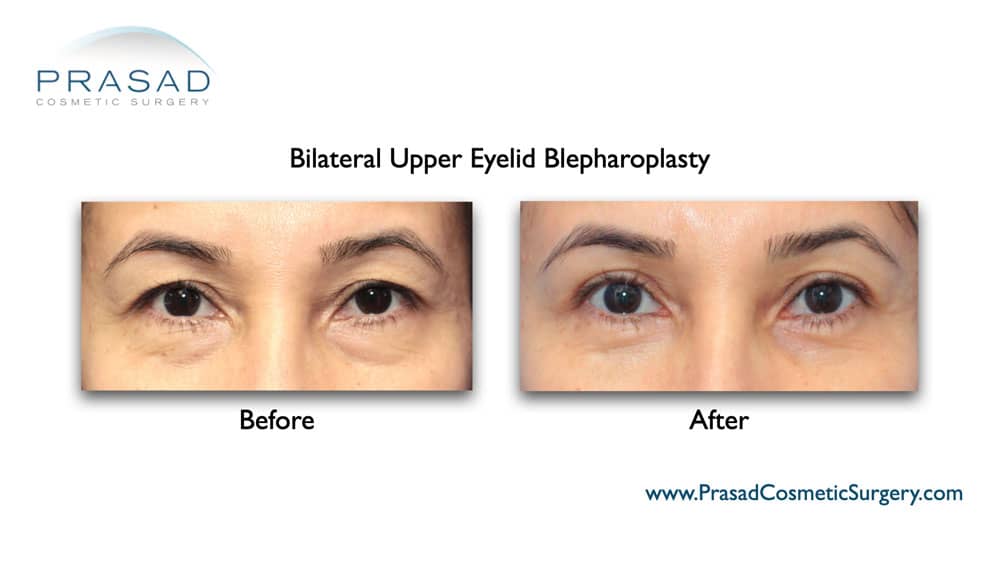
When Asymmetrical Eyes are Normal
Some people are concerned because their upper eyelids are slightly different in height. This is often something that only they are aware of, and that no one else notices. I explain that a 1-2mm difference in the height of the eyelids is normal. Most people who look at you won’t notice anything unless there is more than a 2 mm difference in height between your two eyelids.
If the difference in eyelid height is within this normal range, surgery is usually not recommended. If the difference between the eyes is greater than 2 mm, one eye may be too low or too high. Of course, there are conditions in which both eyes are too low, too high, or a combination of both eyes being too high, and both eyes being too low.
Asymmetrical Eyes Causes
Eyelid ptosis describes a condition in which the eyelid is lower than it should be. There are two types of eyelid ptosis: congenital ptosis refers to ptosis that you were born with, whereas acquired ptosis refers to ptosis that develops after birth. When there is significant acquired ptosis, an ophthalmologic and neurologic examination may be required to rule out a neurologic cause for the ptosis.
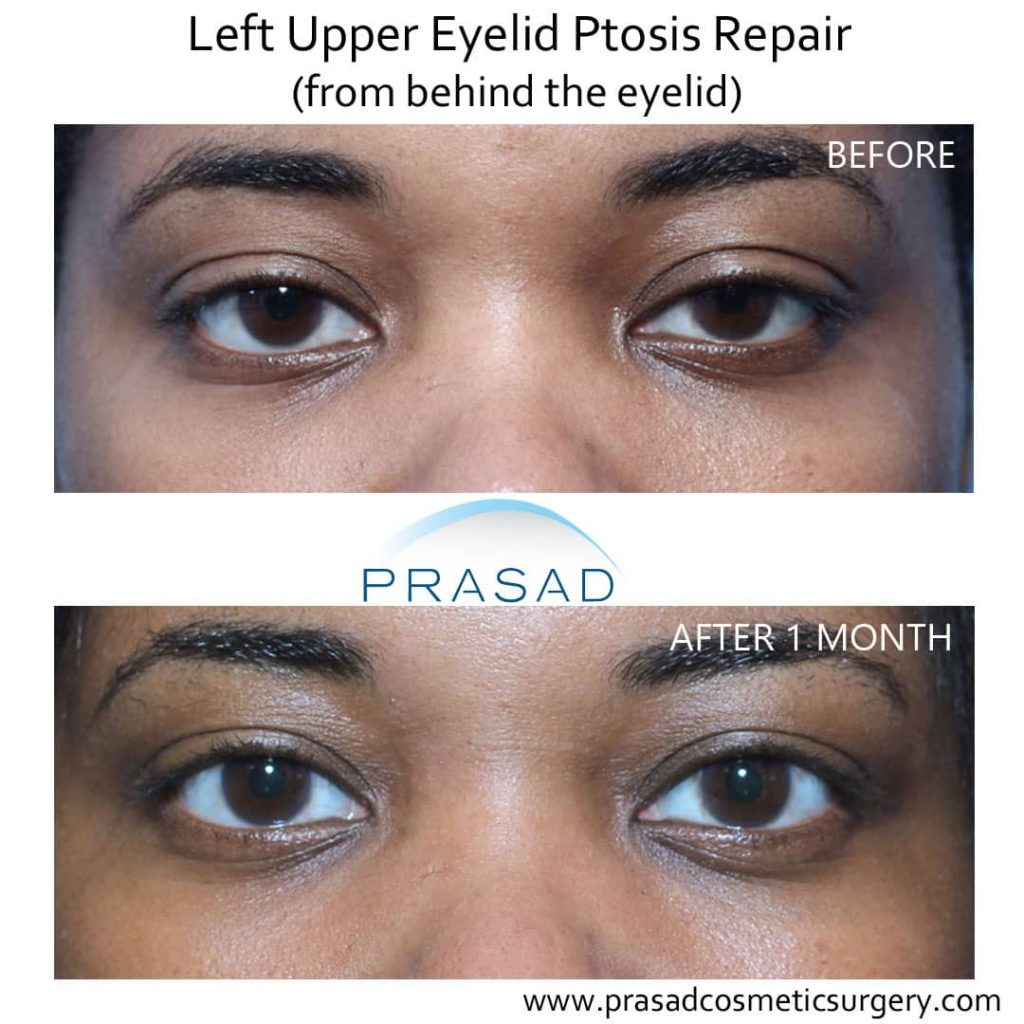
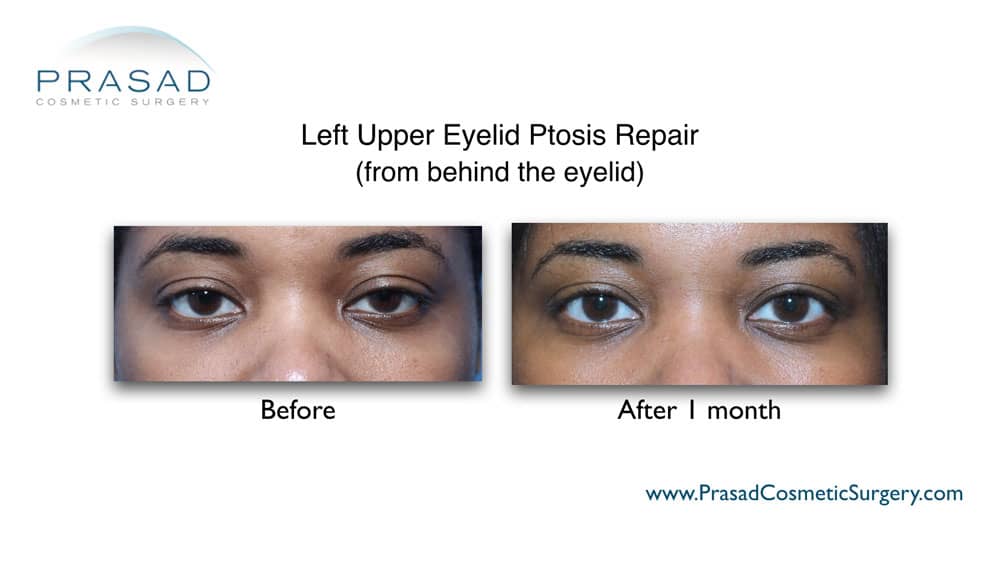
Eyelid Ptosis Surgery for Asymmetric Eyelids
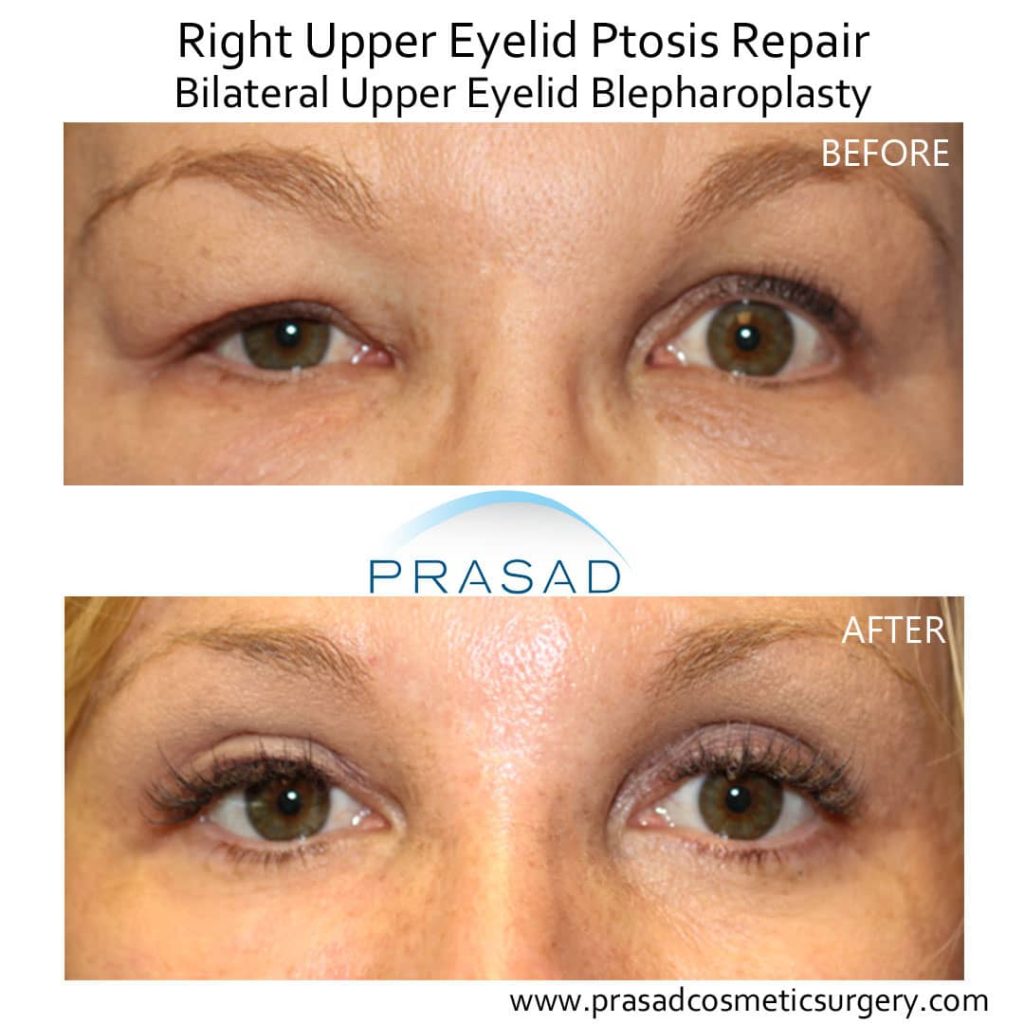
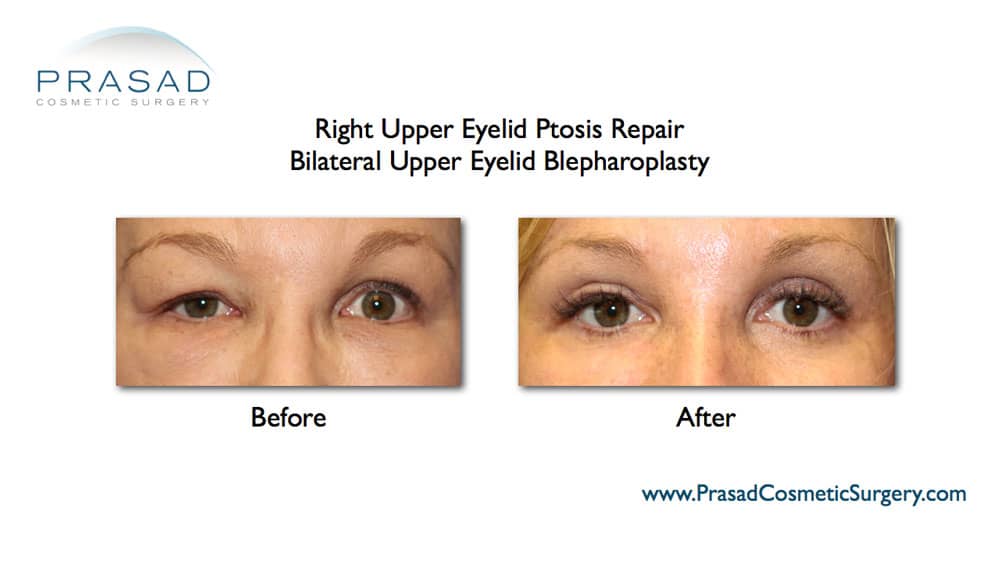
I also perform levator muscle advancement surgery, which is done from the front of the eyelid to the upper eyelid crease. In certain cases, such as congenital ptosis with minimal to no levator muscle function, I perform a procedure known as a frontalis sling in which I connect the eyelid to the muscle above the brows known as the frontalis muscle, which allows the action of raising the brow to open the upper eyelid.
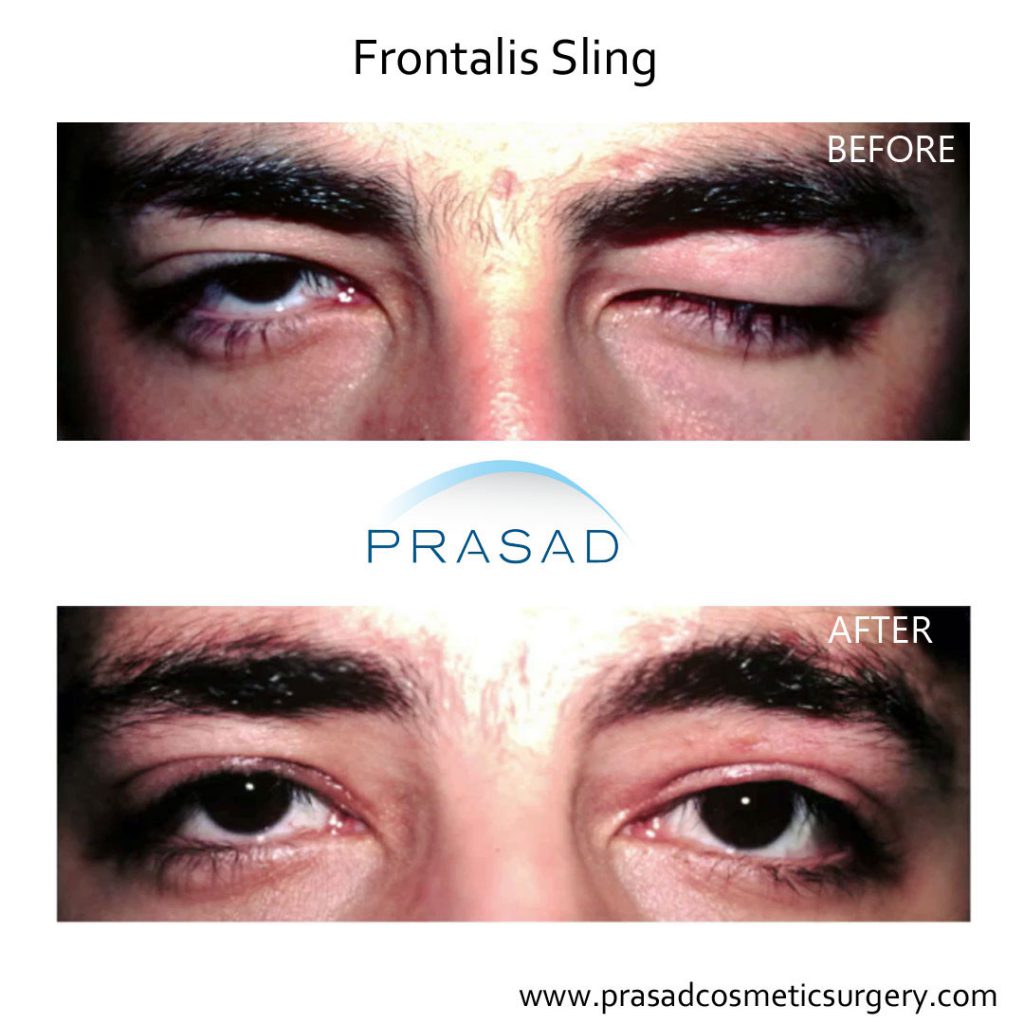
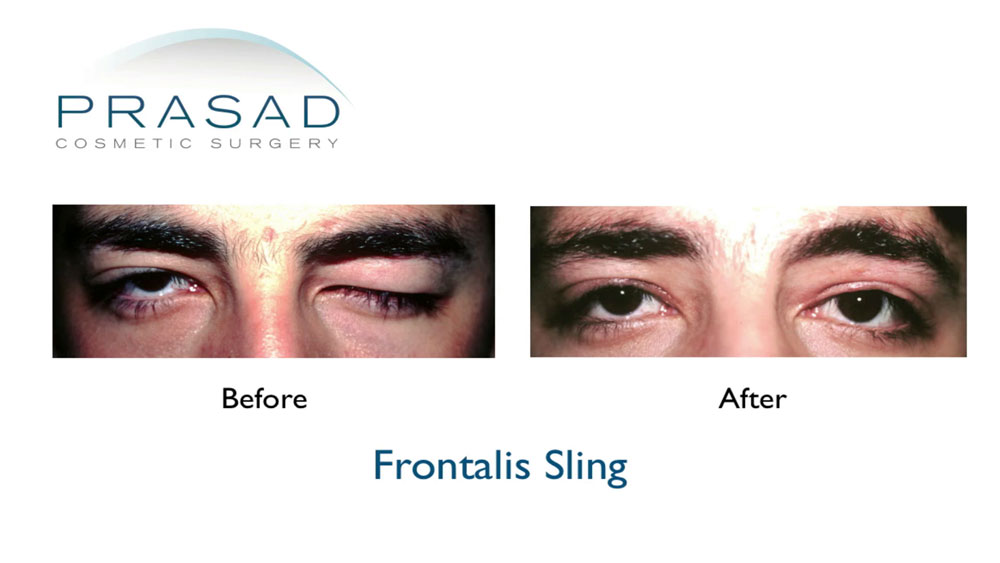
How to Fix Asymmetrical Eyes without Surgery
The relationship of the brows to the eyes are determined by bone structure. When a surgeon performs upper eyelid surgery, this variable is not always fully appreciated, resulting in hollow upper eyelids. I frequently address this situation by injecting long-lasting hyaluronic acid fillers at the bone level to restore fullness in a more natural way. The same is true when there has been no prior surgery but the upper eyelid area appears asymmetrically hollow due to genetics or aging.

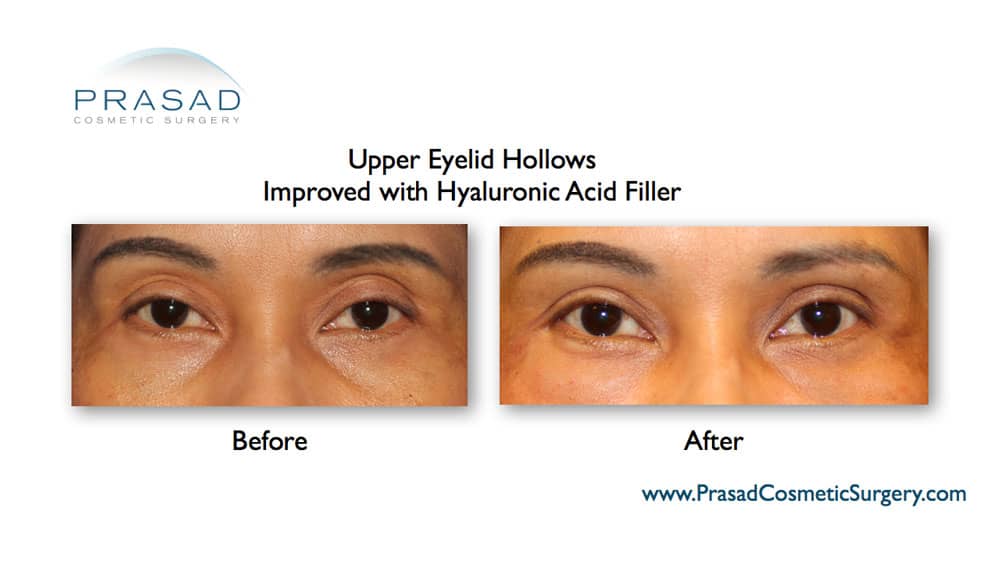
How to Fix Asymmetrical Eyelids with Surgery
The upper eyelid skin can also appear asymmetric between the two eyes in a variety of ways, including the amount of hooding, and fullness. In Asian anatomy, one eyelid may have multiple creases, while the other may have only one, or none. Upper eyelid blepharoplasty or cosmetic upper eyelid surgery is commonly used to treat these conditions. I approach these situations with a strategy tailored to the patient’s anatomy. For example, the amount of skin and fat contouring I would perform on each eye would be different.
In the case of multiple creases in an Asian eyelid, I would consider non-incisional Asian eyelid surgery to create a more stable and symmetric eyelid crease.
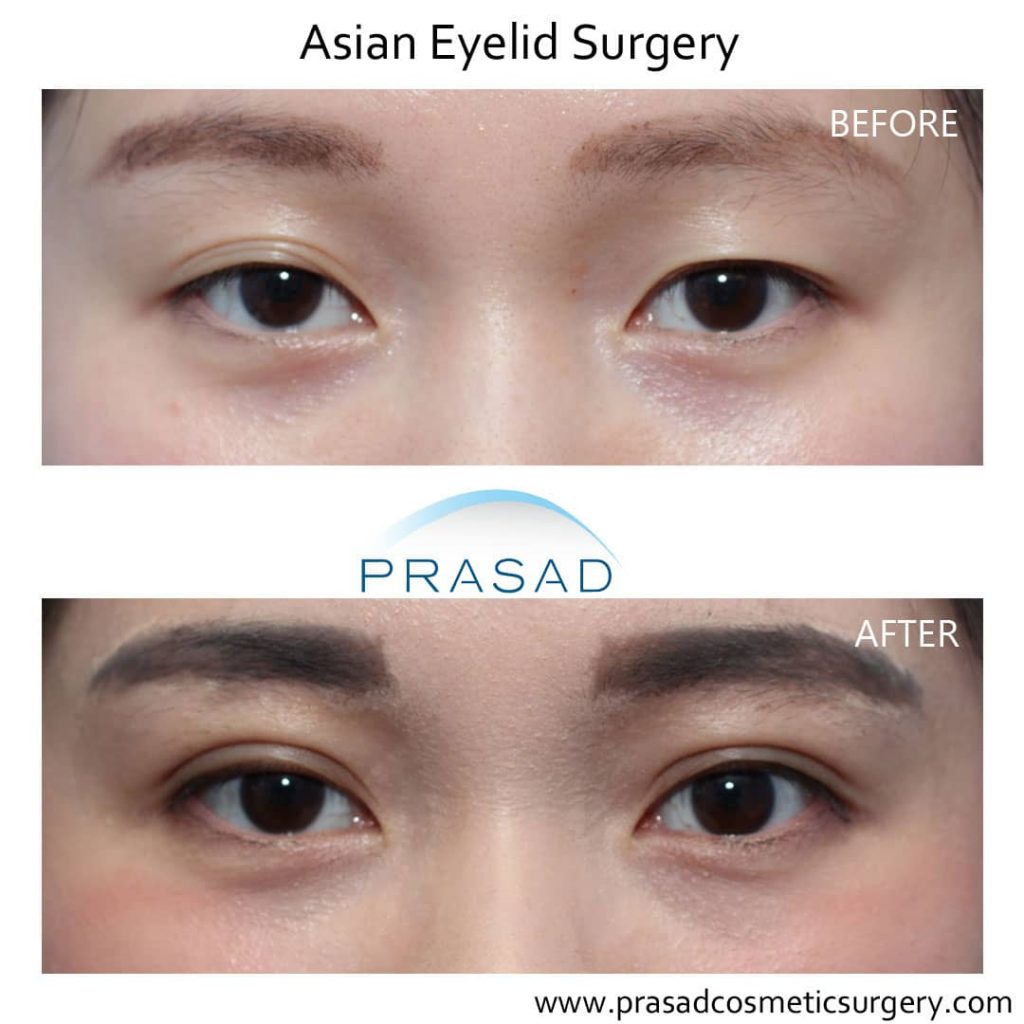
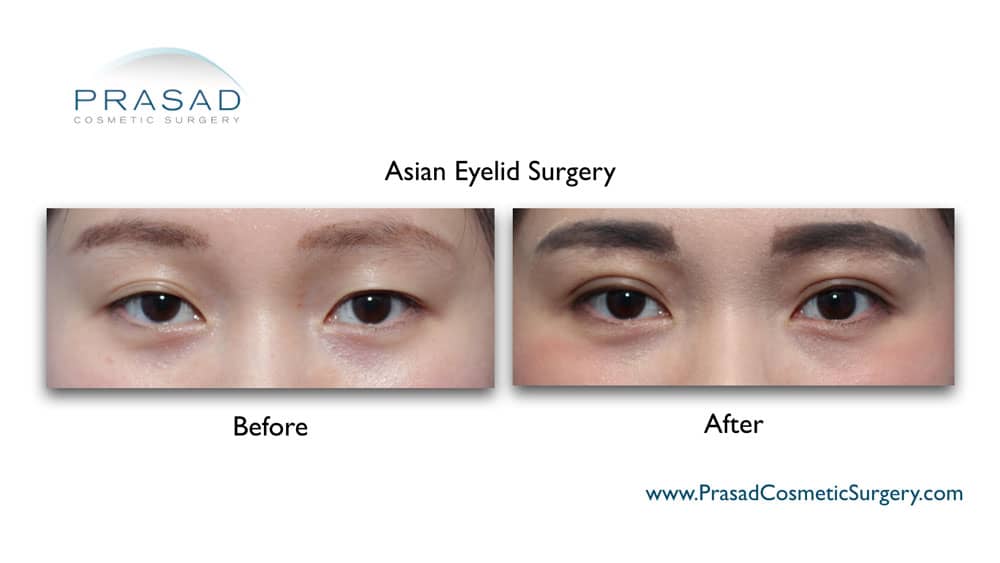
Filler placement is routinely performed in my exam rooms with blunt cannulas resulting in minimal to no bruising and swelling. I use local anesthesia with LITE IV sedation to perform upper eyelid surgeries such as upper blepharoplasty, ptosis correction, and frontalis sling. I have my patients sit up during some ptosis surgery procedures so that I can assess the eyelid height and shape with the patient in a natural and upright position. This method has been more convenient for the patient because it avoids the nausea and opioid drugs commonly associated with general anesthesia. Our patients typically return to work within a week.
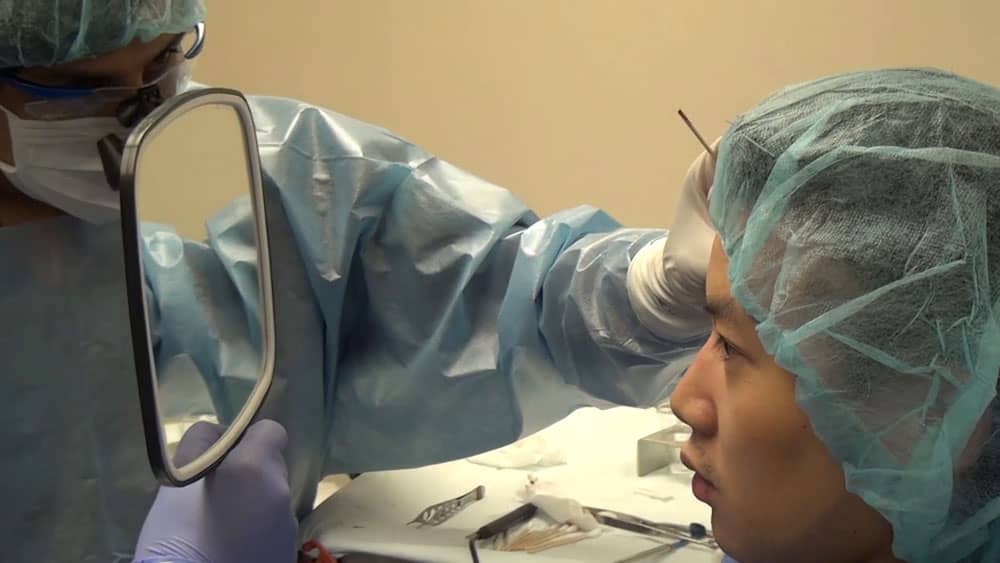
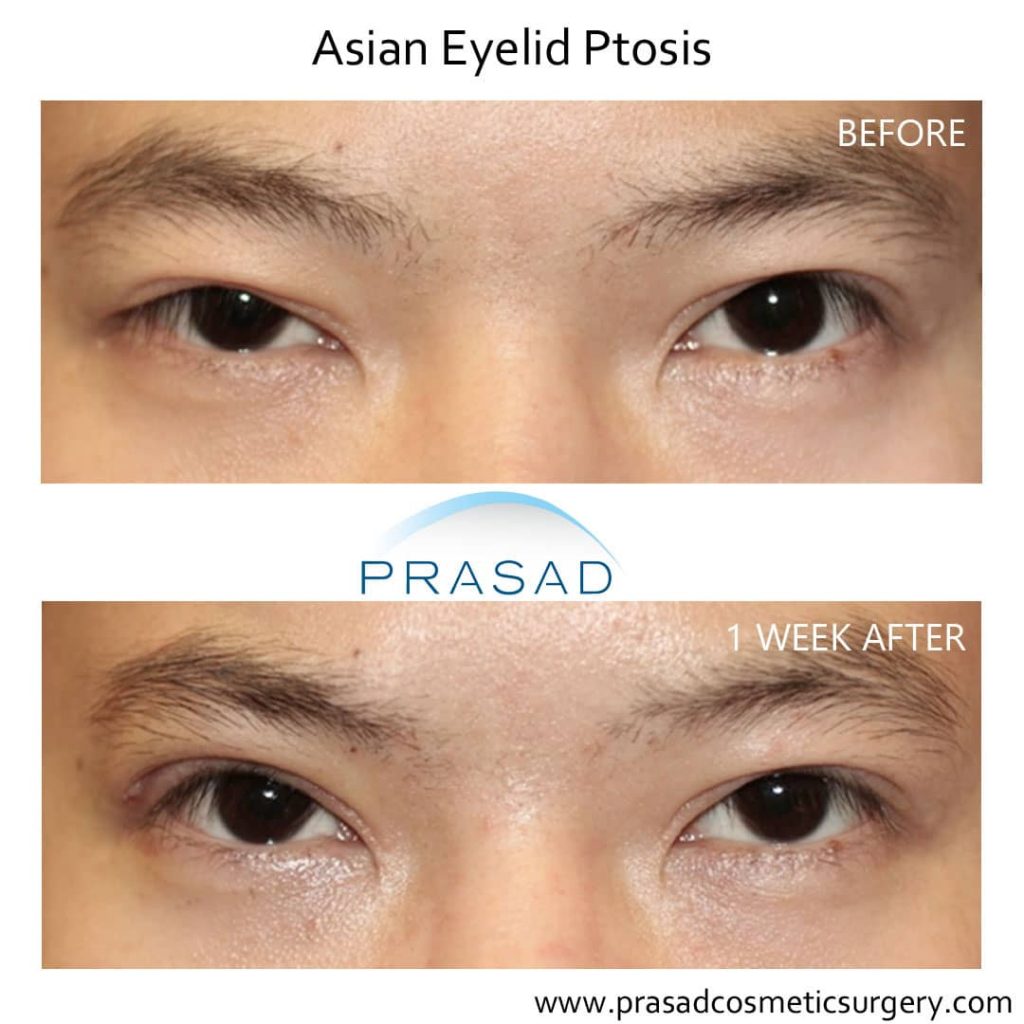
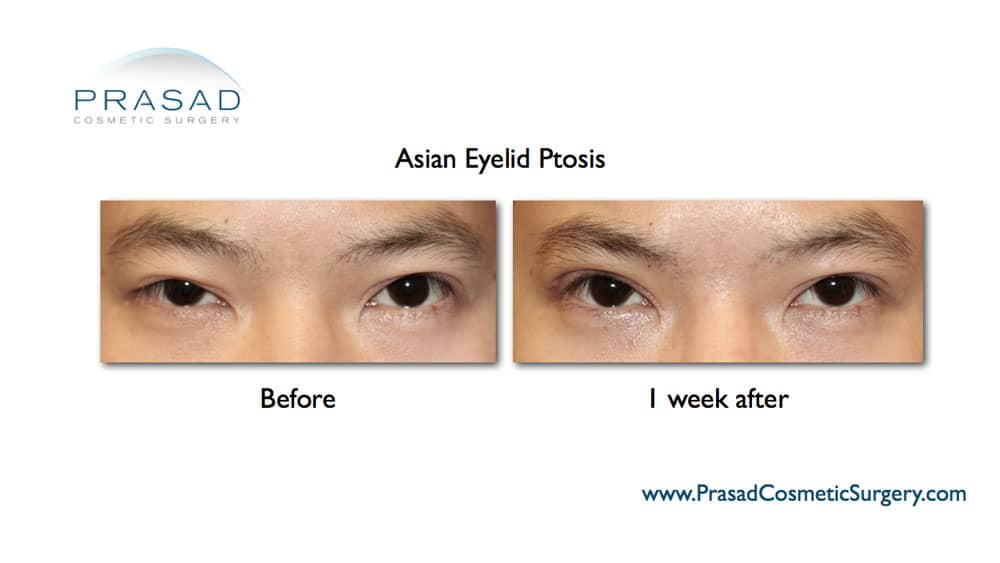
Conclusion
Before deciding whether upper eyelid surgery is right for you, it’s important to distinguish between natural and subtle asymmetry, from significant asymmetry. When considering surgery or non-surgical options, the surgeon’s experience and aesthetic style are critical for achieving natural-looking results. Eyelid surgery is extremely precise, especially when it comes to achieving maximum symmetry – millimeters really do matter.
